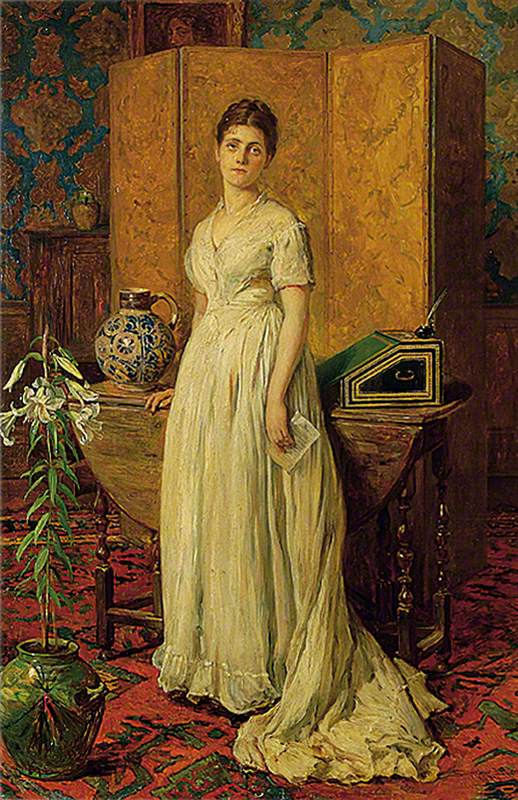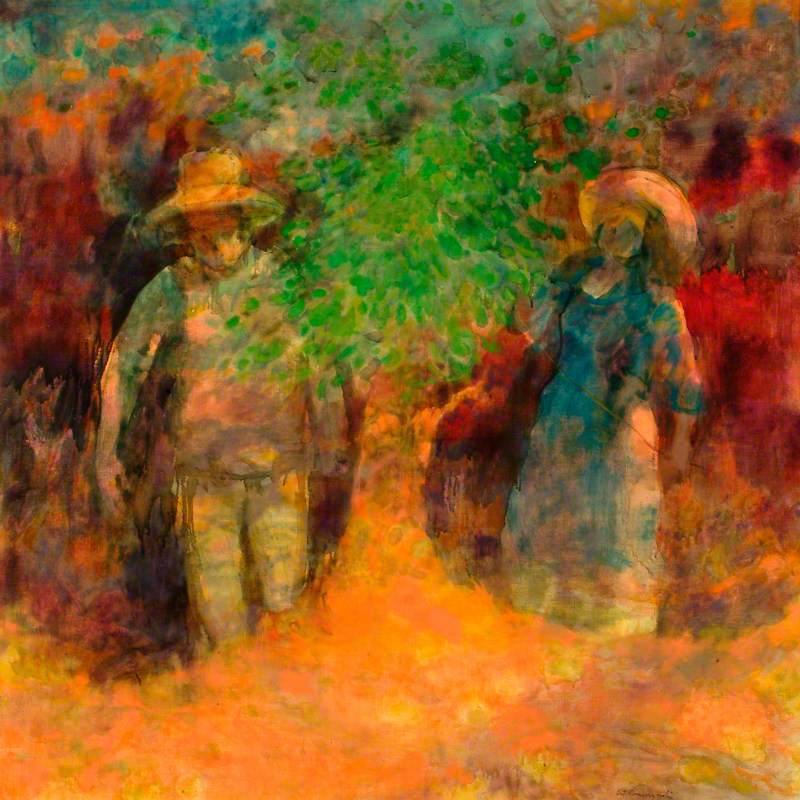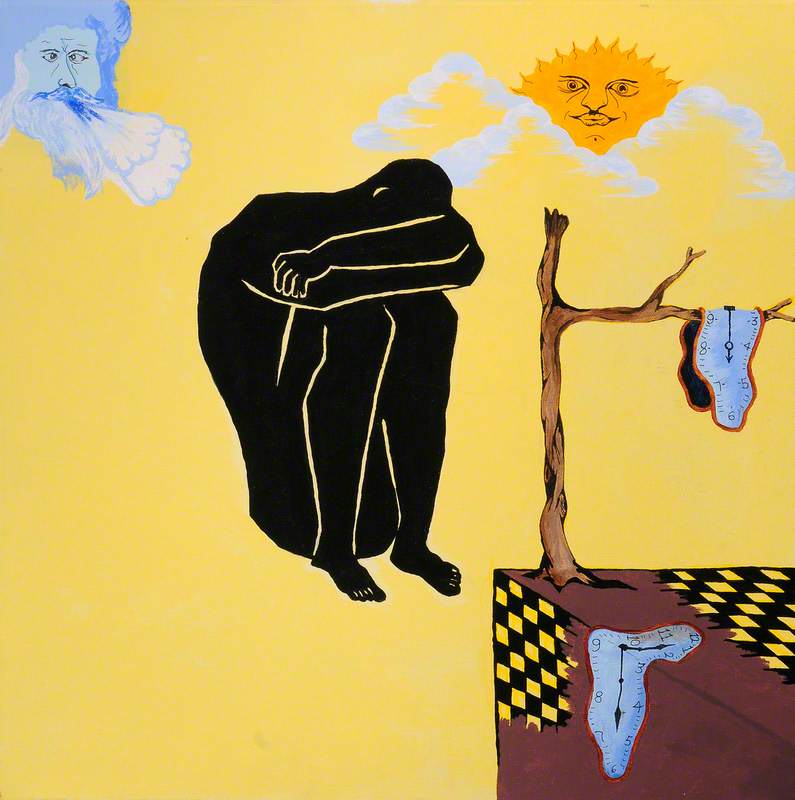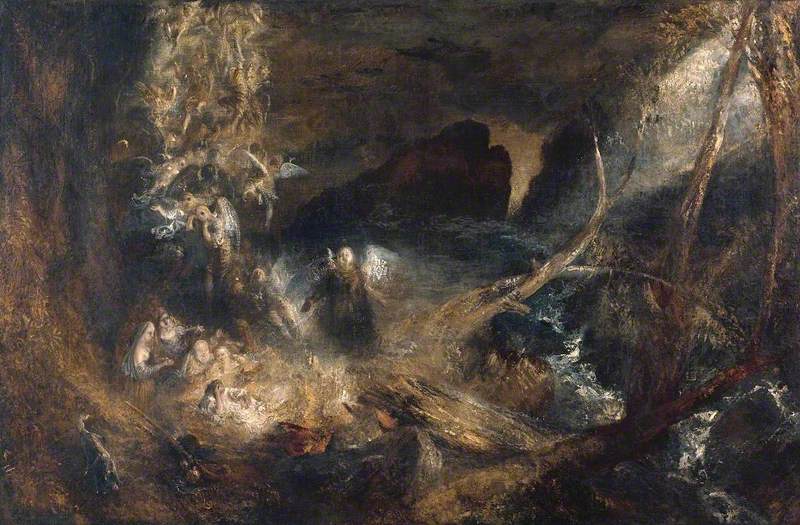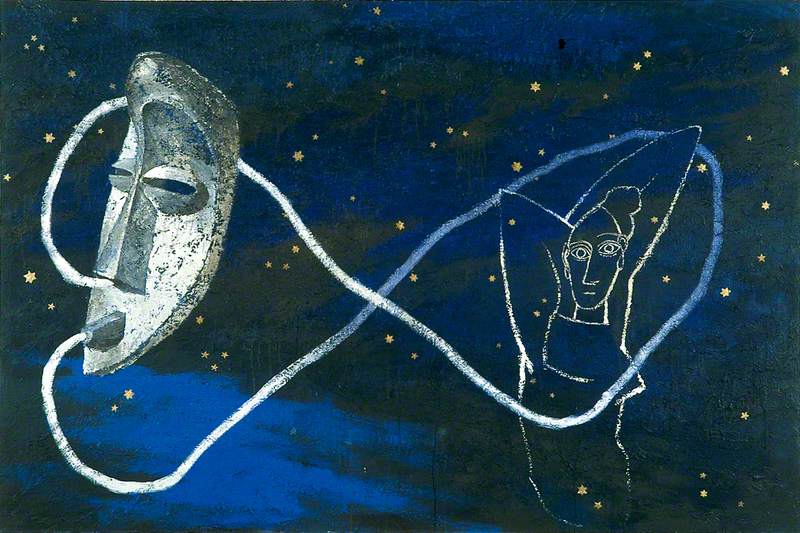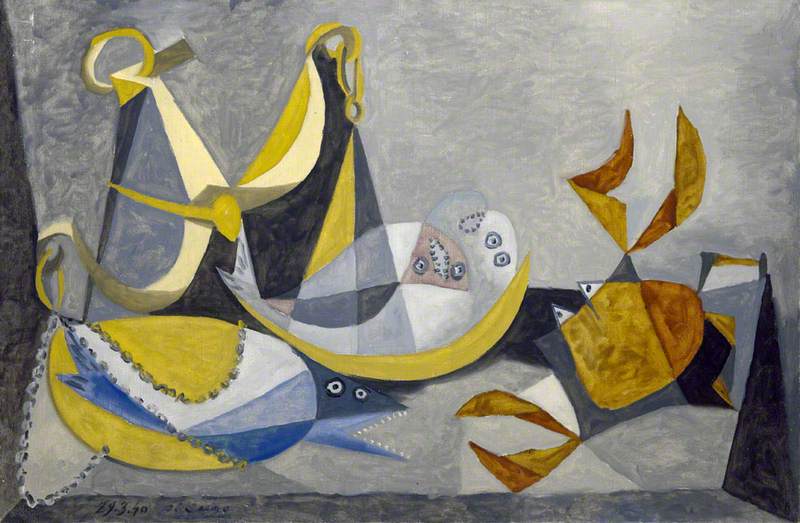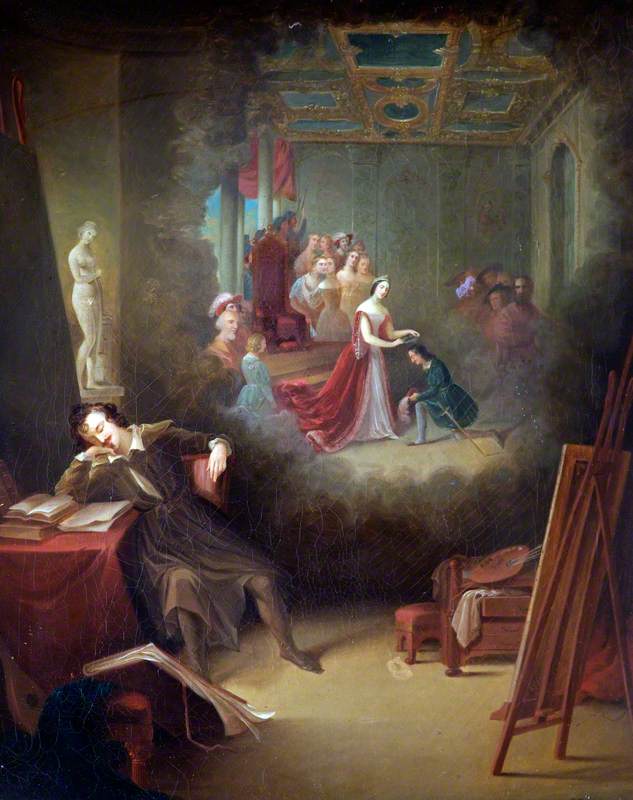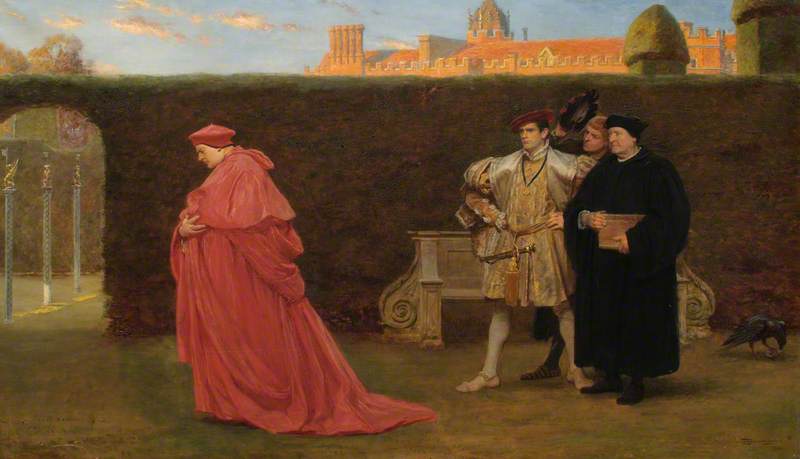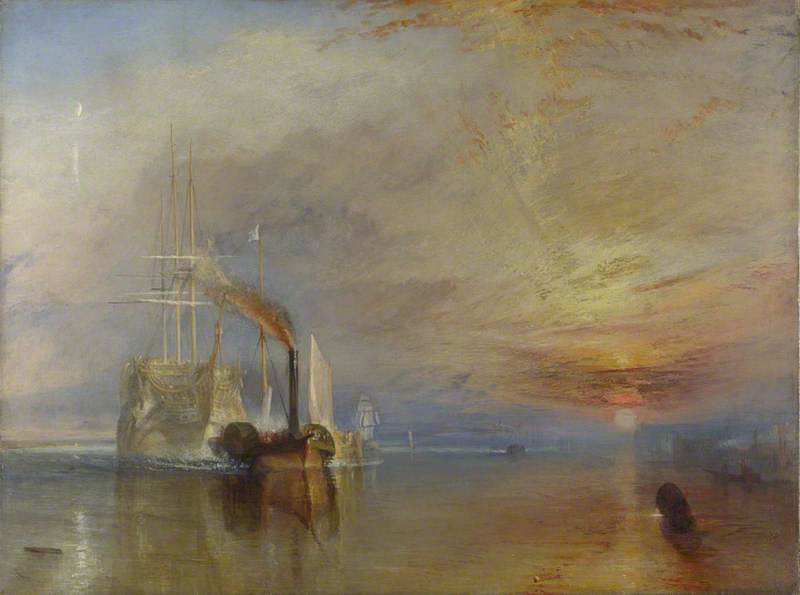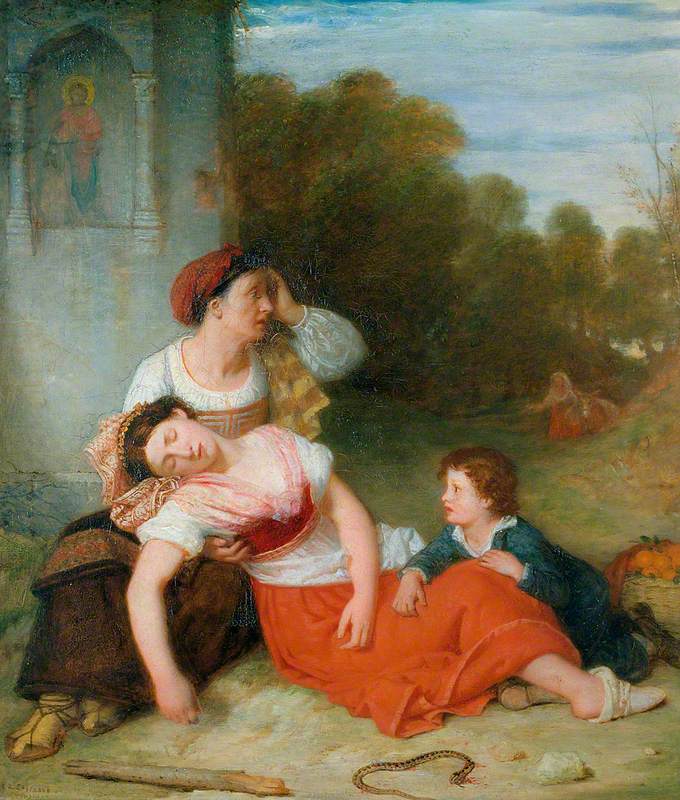My dream curation is indeed my "dream" curation. Thinking about ten dreams from the realms of science, literature, the arts and the Bible led me to this varied collection of artworks. There are many ways of telling a story, and a set of artworks, being visual and thought-provoking, is a powerful one.
-
Yesterday
Yesterday (The Letter) c.1880The melody to the song “Yesterday” came to Paul McCartney in a dream. He woke up and stumbled to the piano by his bedside to work out the chords. “I just fell out of bed, found out what key I had dreamed it in…and I played it.”
Whatever the contents of the letter, the subject of John Seymour Lucas's artwork looks like the embodiment of "Yesterday, All my troubles seemed so far away ....now I long for Yesterday." The downward sloping of the plant leaves seem to echo her downbeat mood.
John Seymour Lucas (1849–1923)
Oil on canvas
H 68 x W 52 cm
Colchester and Ipswich Museums Service: Ipswich Borough Council Collection
-
The Twilight saga
Twilight 1989According to Stephanie Meyer, the idea for Twilight came to her in a dream on June 2, 2003 about a human girl and a vampire who was in love with her but thirsted for her blood. Based on this dream, Meyer started to write the draft of what would become the series of immensely popular vampire-themed romance novels.
"I woke up (on that June 2nd) from a very vivid dream. In my dream, two people were having an intense conversation in a meadow in the woods. One of these people was just your average girl. The other person was fantastically beautiful, sparkly, and a vampire."
I think Muszynski's painting, with it's ageless figures and semi-abstract qualities, has a dreamlike quality of its own.
Leszek Muszynski (1923–2012)
Oil on canvas
H 89 x W 89 cm
University of Surrey
-
Sewing machine
Sewing Machine, Wife and Baby c.1960Elias Howe invented the sewing machine in 1845. He had the idea of a machine with a needle which would go through a piece of cloth but he couldn't figure out exactly how it would work. In his dream, cannibals were preparing to cook him and they were dancing around the fire waving their spears. Howe noticed at the head of each spear there was a small hole through the shaft and the up-and-down motion of the spears and the hole remained with him on waking. The idea of passing the thread through the needle close to the point made mechanical sewing possible.
This flatly painted scene accords(literally)heightened importance to the semi-abstracted Singer machine, and would doubtlessly strike a chord with working from home parents of 2020
John Randall Bratby (1928–1992)
Oil on board
H 89.5 x W 118 cm
Gallery Oldham
 © the artist's estate / Bridgeman Images. Image credit: Gallery Oldham
© the artist's estate / Bridgeman Images. Image credit: Gallery Oldham
-
DNA
Double Helix 2005The shape and structure of DNA eluded scientists until 1953, when Dr. James Watson had a dream that made him consider the double helix. According to Dr. Watson’s alma mater, Indiana University, the dream was of two intertwined serpents with heads at opposite ends, though other accounts say the dream was of a double-sided staircase.
Jencks made a number of similar sculptures, and I am sure this interpretation in metal would aid understanding of the idea of a double helix.
Charles Jencks (1939–2019)
Bronze
H 366 x W 444 x D 186 cm
Clare College, University of Cambridge
-
A Midsummer night's dream
A Midsummer Night's Dream c.1900Dreams are a major theme in this work by Shakespeare, and indeed Puck exhorts us to see the whole play as a dream.
“I have had a dream, past the wit of man to say what dream it was. Man is but an ass if he go about t’expound this dream,” Bottom says, unable to fathom the magical happenings that have affected him as anything but the result of slumber.
This painting by Fowler has a dream-like supernatural quality in the way the multiple characters are painted and seem to blend into each other.
Robert Fowler (1853–1926)
Oil on canvas
H 125 x W 212 cm
Rotherham Heritage Services
-
Persistence of memory
Persistence of MemoryThe melting of clocks, symbolising the dwindling of time, originated from a dream of surrealist artist Salvador Dali. The scene of his original Persistence of memory was seen in a dream, and he described his works as hand painted dream photographs.
I can only guess that this rather minimalist "after the style of" work by Tony Nadin is perhaps expressing similar chagrin that time is running out.
Tony Nadin
Oil on canvas
H 60 x W 60 cm
Wrexham County Borough Museum and Archives
-
Jacob's ladder
The Vision of Jacob's Ladder (?) c.1830According to the biblical story, while Jacob was travelling, one night he stayed at a place called Luz. During the night, he had a dream of a stairway reaching up to heaven, with angels ascending and descending it. At its top he heard the voice of God. When Jacob awoke, he was in awe of what had happened there and concluded that it was the house of God and that the stairway led to the gate of heaven.
The painting has an energy typical of Turner, and the sense of movement in the brushstrokes and the tones being limited to browns and greys all adds to the mysterious and dreamlike effect.
Joseph Mallord William Turner (1775–1851)
Oil on canvas
H 123.2 x W 188 cm
Tate
-
Infinity
Untitled 1989Srinivasa Ramanujan was a mathematical genius who made substantial contributions to analytical theory of numbers, elliptical functions, continued fractions, and infinite series. Ramanujan stated that the insight for his work came to him in his dreams on many occasions. He said that, throughout his life, he repeatedly dreamed of a Hindu goddess known as Namakkal, and a hand that began to write on a red screen formed by flowing blood.
This intriguing modern artwork by Jantjes is set on a cosmic background and one its symbols implies infinity, yet it is as unfathomable as its lack of title, as of course is the concept of infinity.
Gavin Jantjes (b.1948)
Sand, tissue paper & acrylic on canvas
H 200 x W 300 cm
Arts Council Collection, Southbank Centre
-
Fossil fish
Les soles (The Soles) 1940Louis Agassiz was the world’s foremost expert on fish species – both current and extinct. He had been trying to understand the structure of a fossil fish for two weeks, but could make no progress. For 2 nights he woke, persuaded that while asleep he had seen his fish with all the missing features perfectly restored, but when he tried to hold and make fast the image it escaped him. On the third night he placed a pencil and paper beside his bed before going to sleep. Still half dreaming, in perfect darkness, he drew zoological characteristics of the fossil which were later revealed when the stone surface was cut.
I have chosen the Picasso because, as well as it being an interesting piece of modern art, I felt it too resembled a puzzle.
Pablo Picasso (1881–1973)
Oil on canvas
H 60 x W 92 cm
National Galleries of Scotland
-
Patronage
A Painter Dreaming of Queen Victoria's Patronage of the Arts (?) 1841and finally, well.... an artist can always dream too!
Charles Lock Eastlake (1793–1865) (attributed to)
Oil on canvas
H 89 x W 71 cm
Cardiff Council
